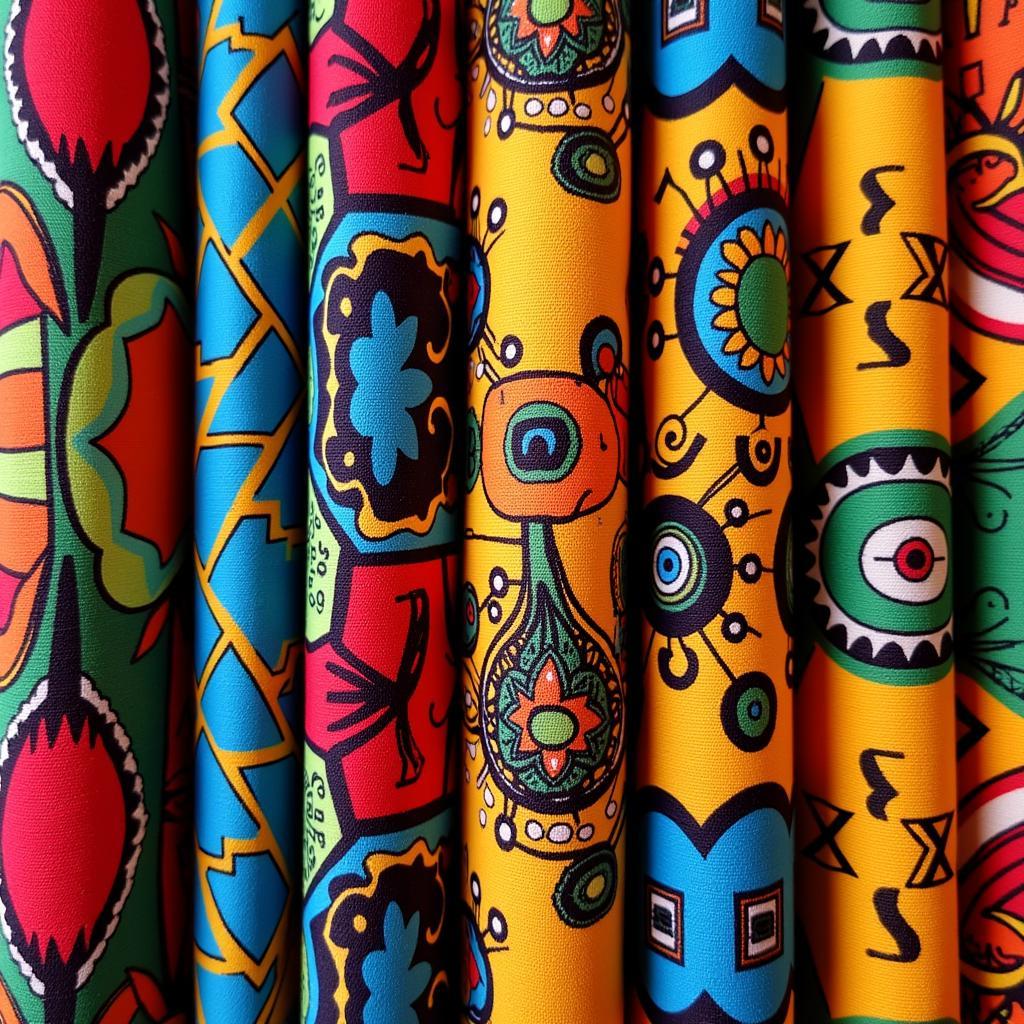Understanding African Cichlids Size
African cichlids are a popular choice for freshwater aquarium enthusiasts, renowned for their vibrant colors and engaging behavior. However, a common question among both novice and experienced aquarists is, “How big do African cichlids get?” The answer, as with many things in the aquatic world, is, “It depends.”
African cichlids exhibit a wide range of sizes, with some species staying relatively small, while others can grow to impressive lengths. Understanding the potential size of your cichlids is crucial for selecting the right tank size, tank mates, and ensuring a thriving aquatic environment.
Factors Influencing African Cichlid Size
While genetics play a significant role in determining the ultimate size of your cichlids, several environmental factors can influence their growth and development:
- Tank Size: Perhaps the most crucial factor, tank size directly impacts cichlid growth. A cramped environment can stunt growth, while a spacious tank allows for optimal development.
- Water Quality: Like all fish, African cichlids thrive in clean, well-maintained water. Regular water changes and proper filtration are essential for healthy growth.
- Diet: A balanced and nutritious diet is vital for maximizing cichlid size. High-quality cichlid pellets, supplemented with live or frozen foods, will promote optimal growth.
Small African Cichlids for Nano Tanks
Don’t let limited space deter you from enjoying these captivating fish. Several African cichlid species remain relatively small, making them ideal for nano tanks:
- Shell-Dwelling Cichlids: As the name suggests, these cichlids prefer the security of empty snail shells. Species like Neolamprologus multifasciatus and Lamprologus oculus stay under 3 inches, making them perfect for smaller setups.
- Dwarf Cichlids: These diminutive cichlids, including Apistogramma and Pelvicachromis species, typically reach a maximum size of 2-4 inches, adding a splash of color to nano aquariums.
Medium-Sized African Cichlids: A Popular Choice
Many aquarists favor medium-sized African cichlids, offering a balance between manageable size and impressive presence:
- Peacocks: Hailing from Lake Malawi, Peacock cichlids are known for their vibrant colors and striking patterns. Males are typically larger, reaching 4-6 inches, while females stay slightly smaller.
- Haps: Another Lake Malawi inhabitant, Hap cichlids are generally peaceful and display beautiful coloration. Most Hap species grow between 4-8 inches, making them well-suited for larger aquariums.
Large African Cichlids: The Gentle Giants
For experienced aquarists with spacious tanks, large African cichlids offer an awe-inspiring display:
- Frontosa: With its distinctive hump and striking black and white markings, the Frontosa cichlid is a sought-after species. Reaching up to 14 inches in length, they require a substantial tank and compatible tank mates.
- Red Empress: As its name implies, the male Red Empress cichlid boasts vibrant red coloration. Growing up to 8 inches, these fish require ample space and a well-structured environment.
Creating the Ideal Environment for Your Cichlids
Regardless of their size, providing a suitable environment is crucial for your African cichlids’ well-being. Here are key factors to consider:
- Tank Size Matters: Research the specific requirements of your chosen cichlid species. As a general rule, larger cichlids need bigger tanks. Overcrowding can lead to aggression and health issues.
- Aquascaping for Cichlids: African cichlids appreciate a rocky environment with plenty of caves and hiding spaces. Use rocks, caves, and driftwood to create a naturalistic setup.
- Compatible Tank Mates: Carefully select tank mates that can tolerate the sometimes boisterous nature of African cichlids. Avoid adding smaller, more peaceful species that may become targets.
FAQs about African Cichlid Size
Q: Do African cichlids stop growing when their tank is small?
A: While cichlids may not reach their full genetic potential in a cramped tank, their growth doesn’t completely stop. It’s crucial to provide adequate space for their overall health and well-being.
Q: How fast do African cichlids grow?
A: Growth rates vary depending on the species, genetics, diet, and water conditions. However, most African cichlids reach their full size within the first 12-18 months of life.
Q: Can I keep different sized African cichlids together?
A: Mixing different sized cichlids can be challenging. Larger cichlids may view smaller ones as prey. It’s best to stick with species of similar size and temperament.
Exploring the World of African Cichlids
Choosing the right African cichlids for your aquarium is an exciting endeavor. By understanding their potential size and providing a suitable environment, you can enjoy the captivating beauty and behavior of these fascinating fish for years to come. For those seeking specific setup ideas, our article on African Cichlid Tank Setup Ideas provides valuable insights and inspiration. Additionally, if you’re interested in exploring the unique characteristics and care requirements of specific types like the Red Peacock, visit our dedicated page on the African Cichlid Red Peacock.
Whether you’re drawn to the vibrant hues of Peacocks, the gentle nature of Haps, or the majestic presence of Frontosas, researching the ideal African Fish for Sale ensures a thriving and captivating aquatic environment. From finding the perfect African Cichlids Haps and Peacocks for Sale to exploring the compatibility of African Knife Fish with Cichlids, our website offers a wealth of information to guide you on your African cichlid keeping journey.

